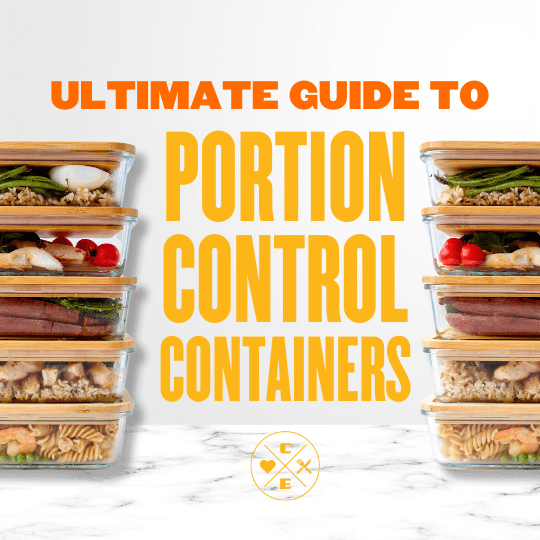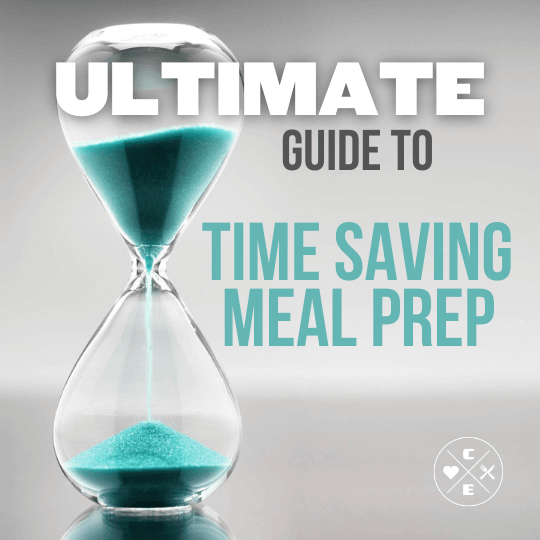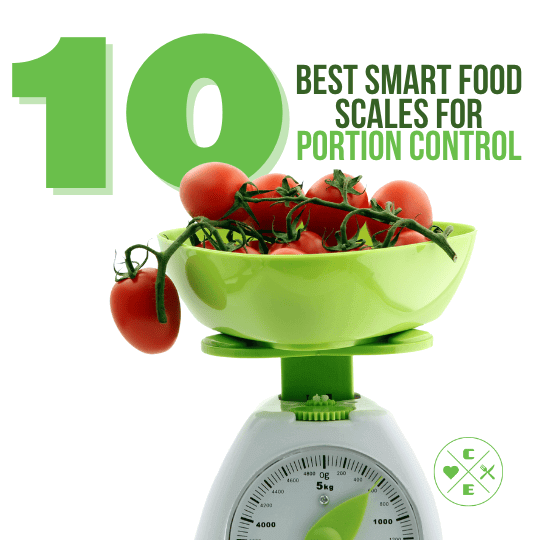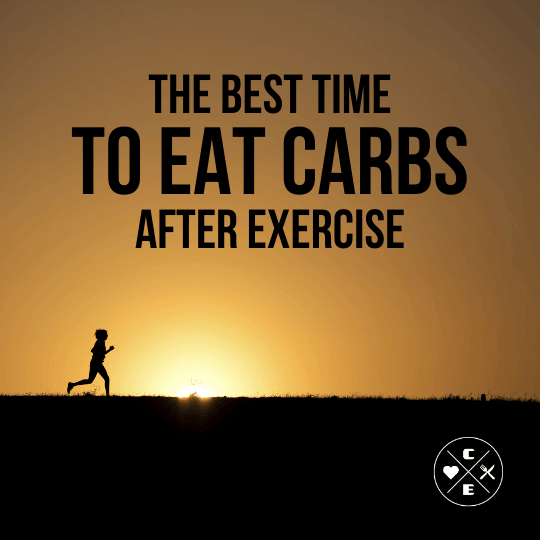
Ultimate Guide to Portion Control Containers
Jason Nista
Nutrition
|
Healthy Lifestyle
8 minute read
Table of Contents
Portion control containers simplify healthy eating by managing serving sizes without calorie counting. They use color-coding or compartmental layouts to measure food, helping users avoid overeating and maintain balanced meals. Here's what you need to know:
- Who Benefits: Ideal for weight management, athletes, and busy professionals.
- Types: Choose from color-coded sets (e.g., green for veggies, red for proteins) or multi-section containers for balanced meal prep.
- How to Use: Match container counts to calorie goals, adjust for dietary needs (e.g., low-carb, high-protein), and follow simple meal prep tips.
- Top Picks: Systems like the 21 Day Fix and services like Clean Eatz Kitchen offer easy solutions for portion control.
These containers make meal planning easier, improve dietary adherence by 37%, and help users eat 22% more vegetables. Whether you're prepping meals at home or using pre-portioned options, portion control containers are a practical tool for healthier eating.
Getting Started with Portion Control Eating Plan
Container Types and Options
Portion control containers come in various designs to suit different dietary habits and lifestyles. Each type helps you manage serving sizes effectively.
Color-Based Container Sets
Color-coded containers make portion management easier by linking specific colors to food groups:
| Container Color | Food Group | Standard Measure |
|---|---|---|
| Green | Vegetables | 1 cup |
| Purple | Fruits | 1 cup |
| Red | Proteins | 3/4 cup |
| Yellow | Carbs | 1/2 cup |
| Blue | Healthy Fats | - |
| Orange | Seeds/Dressings | - |
This system simplifies meal prep, ensuring you stick to recommended portions.
Multi-Section Containers
If you prefer compartments over color cues, multi-section containers are a great choice. These come with 3-5 sections, allowing you to organize meals with a balanced mix of food groups. They’re especially handy for busy professionals who need ready-to-go meals.
Durable Container Options
For daily use, durability is essential. Reliable materials prevent wear and maintain accurate measurements:
- Stainless Steel: Keeps hot or cold foods at the right temperature.
- Glass with Snap-Lock Lids: Offers excellent longevity and keeps leaks at bay.
Some premium containers even have vented lids to keep vegetables fresh for up to four days. To maximize their lifespan, hand-wash lids, avoid storing acidic foods in plastic, and use weekly baking soda soaks to remove odors [1][3].
Getting Started with Portion Containers
Determining Your Daily Container Count
After choosing your container system, figure out your daily needs by following these steps:
- Calculate your target calories based on your goals and activity level.
- Match those calories to the container counts in your system.
- Adjust for dietary preferences to fit your unique needs.
Your container count is tied to your calorie needs. Most portion systems use specific formulas to assign containers. For instance, if your target is 1,200-1,499 calories, you might use 4 green containers for veggies, 4 red for proteins, and 2 yellow for carbs. This approach helps keep your meals balanced while managing portions effectively.
Adapting Containers to Your Diet
Different diets call for specific container changes. For example, low-carb plans reduce the use of yellow containers (carbs) and add more purple containers for fruits like berries. High-protein diets add extra red containers, while vegetarians can swap a red container for two blue containers filled with plant-based proteins.
| Diet Type | Suggested Changes |
|---|---|
| Low-Carb | Reduce Yellow containers by half; add 1 Purple |
| High-Protein | Add 1 Red container per meal |
| Vegetarian | Replace 1 Red with 2 Blue containers |
Tips for Meal Prep Success
Meal prepping with portion containers is all about preparation and organization. Start by batch-cooking staples like grilled chicken or quinoa. When packing your containers, make sure to fill them firmly but avoid compressing the food too much.
Here are a few tips to streamline your prep:
- Label containers with meal times to stay organized.
- Use erasable markers to note dates and keep track of freshness.
One common pitfall is overfilling containers, especially with proteins. According to the 21 Day Fix system, users saw 68% better adherence when they avoided this mistake [3]. For loose items like leafy greens, press them down lightly to ensure accurate portions without compacting.
sbb-itb-1989a25
Why Use Portion Containers
Easy to Use
Portion containers simplify meal prep by eliminating the need for constant measuring and calculations. Unlike food scales, these containers provide pre-set volumes, making portion control straightforward and consistent. No more second-guessing your serving sizes - just fill and go.
Clear Visual Guides
Color-coded containers make portioning even easier. Studies show they reduce measurement mistakes by 42% [3] and help users eat 22% fewer calories while feeling more satisfied, thanks to balanced food ratios like 40% carbs and 30% protein [1][3]. Each color corresponds to a specific food group - green for vegetables, red for proteins, yellow for carbs - making it simple to group foods correctly and avoid mix-ups.
Mix-and-Match Options
You can mix foods within the same container color for variety without overloading your portions. For example, combine spinach and broccoli in a green container to keep meals interesting while sticking to your plan [2][3]. This approach helps users stick to their diet, with 79% continuing to use these containers after six months, compared to just 34% who rely on disposable options [1][3]. The hands-on process of filling containers plays a big role in this success.
If you prefer pre-portioned meals, services like Clean Eatz Kitchen offer ready-made options in containers, combining convenience with portion control. These systems make sticking to your goals easier and more practical.
Best Products for Portion Control
Clean Eatz Kitchen
Clean Eatz Kitchen offers pre-portioned, chef-prepared meals ranging from 250 to 500 calories. With rotating monthly menus tailored to weight loss and high-protein diets, it's perfect for busy professionals looking for convenient, single-serving meals. Their easy-to-use containers make it simple to stick to consistent portion sizes while enjoying a variety of dishes.
For those who prefer creating their own meals but still want portion control, here are some practical tools to consider:
21 Day Fix Container System
The 21 Day Fix system uses a straightforward color-coded method to manage portions. It includes six containers, each representing a specific food group, making meal prep both structured and easy to follow.
"If it fits in the container and it's on the approved food list, then boom, you're done" [3]
This system works well with the weight management strategies discussed earlier, offering a clear and simple way to track servings.
Reusable Container Sets
Reusable container sets are another excellent choice for portion control. Ethika’s 1400ml Divided Food Container, for example, features 3-5 compartments with raised barriers to keep different foods separate. Key benefits include:
- Raised barriers to prevent flavors from mixing
- Translucent lids for quick visibility [1]
These containers, often priced between $15 and $30 for a set of 10-15, are ideal for creating balanced meals. Add-ons like silicone dividers (around $5-10 each) can further customize portions. The divided sections help organize proteins, carbs, and vegetables, making it easier to portion out 400-calorie meals [1][3].
For a more durable option, stainless steel containers are a solid alternative. They last longer than plastic and maintain precise measurements, ensuring consistent portion control.
Getting Started with Portion Control
Main Points
Once you've chosen the right tools, success with portion control comes down to three main principles. Research highlights that using portion control containers boosts dietary adherence by 37% compared to manual portioning [2]. The secret? Consistency. Sticking to the plan at least 90% of the time yields the best results [3].
Start by figuring out your daily calorie needs using the formula provided by your container system. For instance, the 21 Day Fix suggests multiplying your weight by 11 and adjusting for your activity level [3]. This calculation determines how many containers you'll use for each food group daily.
Studies also show that container systems encourage people to eat 22% more vegetables, thanks to dedicated green compartments [1]. To get the most out of this system, spread your containers throughout the day, focusing on morning meals. Research reveals that eating two vegetable portions before noon helps sustain energy and curbs evening snacking [3].
Starting Your Container System
Here’s how to kick off your portion control plan:
Calculate Your Numbers: Use the formula provided by your program to determine how many containers you need each day. Most people require 3-6 portions daily, depending on their goals [3].
Plan Your Meals: Organize your containers for the day. For example:
- Morning: 1 red, 1 purple, 1 fat
- Midday: 2 green, 1 red, 1 yellow
- Evening: 1 green, 1 red [2]
Tracking fruit portions can be tricky - 68% of beginners struggle with this, according to MyFitnessPal data. Stick to purple containers for fruits to avoid overestimating. Also, measure calorie-dense foods like oils and nut butters separately with teaspoons for accuracy [3].
If you're new to this process, consider easing in by using pre-portioned meals from services like Clean Eatz Kitchen a couple of times a week. This hybrid approach helps you visualize proper portions while you get familiar with the system [3].
Related Articles
Ultimate Guide to Time-Saving Meal Prep
9 minute read
10 Best Smart Food Scales for Portion Control
8 minute read
Best Time to Eat Carbs After Exercise
7 minute read



